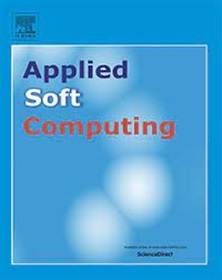利用金字塔池变压器增强滑坡裂缝检测
IF 6.6
1区 计算机科学
Q1 COMPUTER SCIENCE, ARTIFICIAL INTELLIGENCE
引用次数: 0
摘要
滑坡裂缝又称张拉裂缝,是滑坡的主要组成部分。根据滑坡裂缝的分布,可以大致描述滑坡的位置,推断滑坡体的应力分布。滑坡头部裂缝是滑坡体位移的重要标志,可以为滑坡灾害提供预警信号。由于影响裂缝形成的因素很多,裂缝形成的原因也很复杂,目前对裂缝发育特征还缺乏完整的认识。尽管一些早期的干预措施报道了利用先进的机器学习技术自动识别裂缝的模型,但这个问题仍然没有得到充分解决。因此,利用视觉变压器和金字塔池概念的协同融合,提出了一种有效的滑坡裂缝分割深层架构来解决这些问题。在这项工作中,我们使用名为金字塔池变压器的通用视觉变压器骨干,并将其插入我们基于池的多头空间注意力中,构建一个用于识别和分割滑坡裂缝的深层架构,即LanPPT。实验表明,当金字塔池变压器作为骨干网络时,它在各种视觉任务中的表现明显优于许多早期的卷积神经网络和基于普通变压器的网络。系统实验表明,在滑坡裂缝检测任务中,与所选择的最先进基线相比,所提出的模型在mIoU和FPS方面取得了更好的性能。本文章由计算机程序翻译,如有差异,请以英文原文为准。
LanPPT: Enhancing landslide crack detection through pyramid pooling transformers
Landslide cracks, also known as tension cracks, are a major part of landslides. Based on the distribution of landslide fractures, the location of a landslide can be broadly described, and the stress distribution of the sliding mass can be inferred. Cracks at a landslide’s head, which are a key indicator of the displacement of the landslide body, can provide early warning signs for landslide hazards. The complete knowledge of the crack development features is still lacking because of many influencing elements and intricate reasons for fracture creation. Even though some early interventions reported models for automated crack identification utilizing advanced machine learning techniques, the problem still has not been solved to its full potential. Thus, an effective deep architecture for landslide crack segmentation is suggested to address these issues, utilizing a synergistic blend of vision transformers and the pyramid pooling concept. In this work, we use the universal vision transformer backbone called the Pyramid Pooling Transformer, and plug it into our pooling-based multi-head spatial attention to build a deep architecture that identifies and segments the landslide cracks, namely LanPPT. Experiments revealed that when a pyramid pooling transformer is used as the backbone network, it performs significantly better than many earlier convolutional neural networks and normal transformer-based networks in various vision tasks. Systematic experiments show that the proposed model achieved superior performance in terms of mIoU and FPS when compared with the chosen state-of-the-art baselines in the landslide crack detection task.
求助全文
通过发布文献求助,成功后即可免费获取论文全文。
去求助
来源期刊

Applied Soft Computing
工程技术-计算机:跨学科应用
CiteScore
15.80
自引率
6.90%
发文量
874
审稿时长
10.9 months
期刊介绍:
Applied Soft Computing is an international journal promoting an integrated view of soft computing to solve real life problems.The focus is to publish the highest quality research in application and convergence of the areas of Fuzzy Logic, Neural Networks, Evolutionary Computing, Rough Sets and other similar techniques to address real world complexities.
Applied Soft Computing is a rolling publication: articles are published as soon as the editor-in-chief has accepted them. Therefore, the web site will continuously be updated with new articles and the publication time will be short.
 求助内容:
求助内容: 应助结果提醒方式:
应助结果提醒方式:


